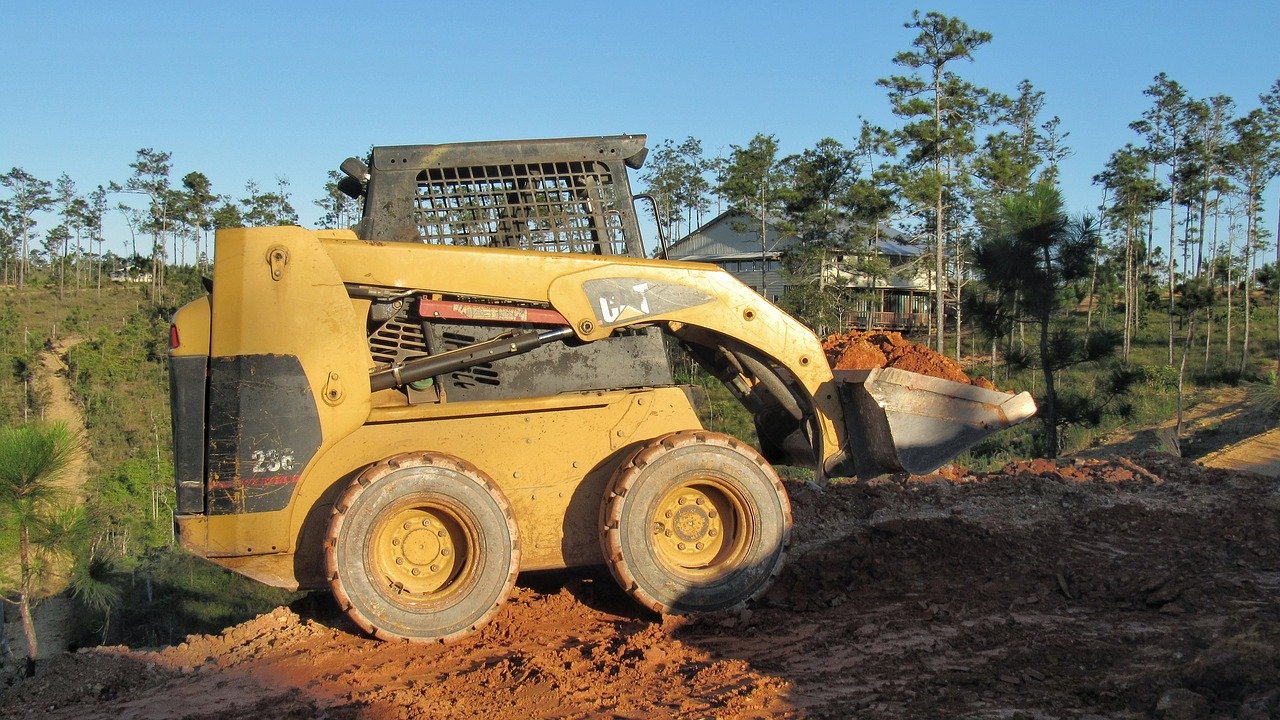Skid steers are renowned pieces of construction equipment in the world of heavy machinery. It would be difficult to find a person who has no idea of what skid steers are, but knowing how to operate one is where the numbers do not stack up. Skid steers can be beneficial for DIY enthusiasts and specialized contractors alike, as long as the functioning procedures are known.
This article focuses on the ideal tips and tricks of working with a skid steer. We have crafted a thorough guideline that promises to benefit skid steer users of all skill levels. We have included many factors that you need to consider before, during, and after using a skid steer. Read this article to learn it all!
What Is a Skid Steer?
A skid steer is a compact and versatile piece of construction machinery that is mostly implemented for digging purposes. Its overall light nature makes it very agile, which in turn makes it ideal for dealing with heavy construction work. Multiple extra attachments can be connected to a skid steer based on the nature of the intended work.
A regular skid steer generally comes with either two pairs of wheels or a couple of tracks underneath. The front and rear axles on each side are connected in a way that they move synchronously. Both the left and right sides can be operated independently, unlike typical vehicles all around the world. None of the wheels or tracks can be turned. Thus, speed is adjusted for the entire skid steer to make a turn.
For instance, if you want to take a right turn on a skid steer, you would need to slow the right axle down while keeping a steady pace on the left. This forces the skid steer to drag or “skid” across the ground and gradually turn towards the right side. Are you still wondering where the name “Skid Steer” came from?
What to Consider When Operating a Skid Steer
Using a skid steer can be more complicated than you might think. Having proper knowledge of the ins and outs of skid steer usage is crucial before deciding to purchase or use one. Let us take a look at some of the best tips and tricks intended to make your experience effective and smooth.
Consult Professionals
When dealing with such complex machinery, it is always recommended to take the help of experts in the field. These professionals would know the right way to maneuver a skid steer with the utmost efficiency. Organizations like Skid Steers Direct specialize in selling skid steer attachments and accessories, as well as providing guidelines for new owners to start using them right away.
Potential customers can contact them and get the best possible form of relevant advice at all times. They are not limited to skid steers only. Upon visiting their website, you will be amazed to witness a massive assortment of machinery up for sale. If you are looking for something specific that is not showcased on the website, chances are, they will set you on the right track of where exactly to acquire it from.
Preparation Is Key
Operating a skid steer is somewhat similar to driving a car. After all, both are vehicles that need to be maneuvered by a driver. Hence, just like in cars, skid steers also come with a full set of controls, accelerating and braking pedals, and a multitude of other functionalities.
If you are attempting to operate a skid steer for the first time, make sure that you have gone through the manual or discussed the operational aspects with the technician who delivered the machine. Do not hesitate to ask even the most obvious questions. Getting the job done right is what truly matters.
Learn How to Maneuver the Bucket
Try keeping the bucket at a lower angle while transporting any materials. Every time you dump or retrieve a load, the bucket has a chance to get soiled with dirt depending on the nature of the site. This can be a problem when moving the load between locations as the bucket stains the entire path with dirt.
Try using the shaker controls that make the bucket vibrate and jerk off the dirt from its body. You can also clean it manually if your skid steer does not come with the shaking feature.
Knowing the capacity and capability of the bucket is also highly important. The ideal practice is to deal with smaller amounts to remain safe. Dirt, mulch, and soil tend to weigh more than you might think. Thus, it is smarter to avoid overloading the bucket deliberately.
Avoid Damaging the Landscape
Heavy machinery like a skid steer is capable of flattening almost anything that comes under it. Thus, it is essential to clear out the worksite before any damage is incurred on parts of the property like the walkways, the sidewalks, and the patios. The smart thing to do is to cover these regions with strong plywood to protect them from the raging skid steer.
Furthermore, as mentioned earlier, skid steers are not capable of turning like regular vehicles. To make a turn, the vehicle needs to “skid” over the ground which, in turn, is extremely damaging to the soil underneath. To prevent such mishaps, take wide turns instead of sharp ones. It is also advisable to not use a skid steer on waterlogged soil or slopes.
Final Thoughts
Using the right equipment not only helps you achieve perfect results but also prevents accidents in the workplace. Excavation, construction, digging, trenching, landscaping, clearing snow – you name it! Skid steers can deal with them all. We hope the information included in this article is enough to steer you towards skid steers!







